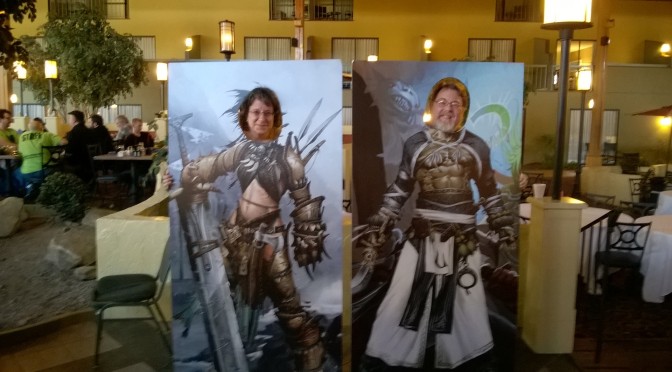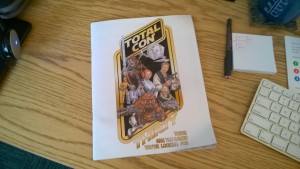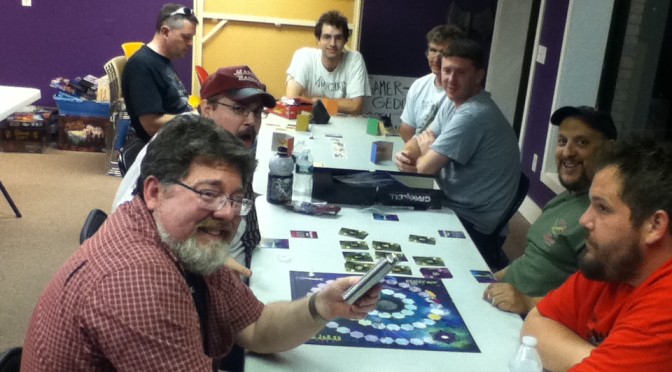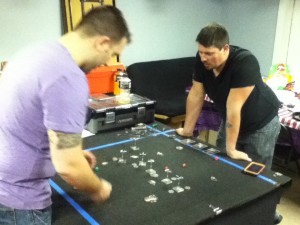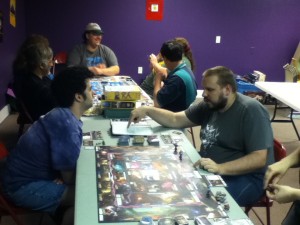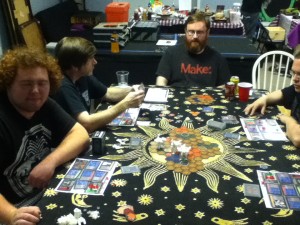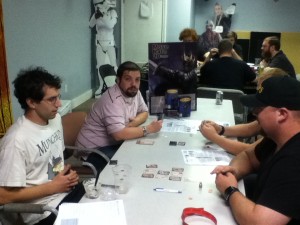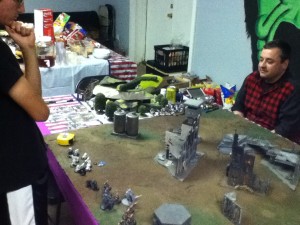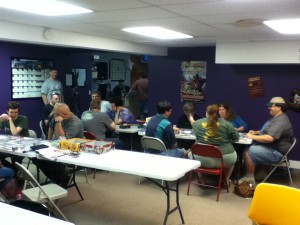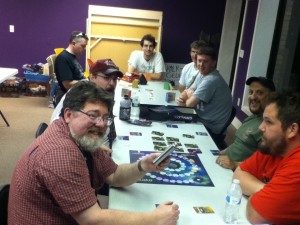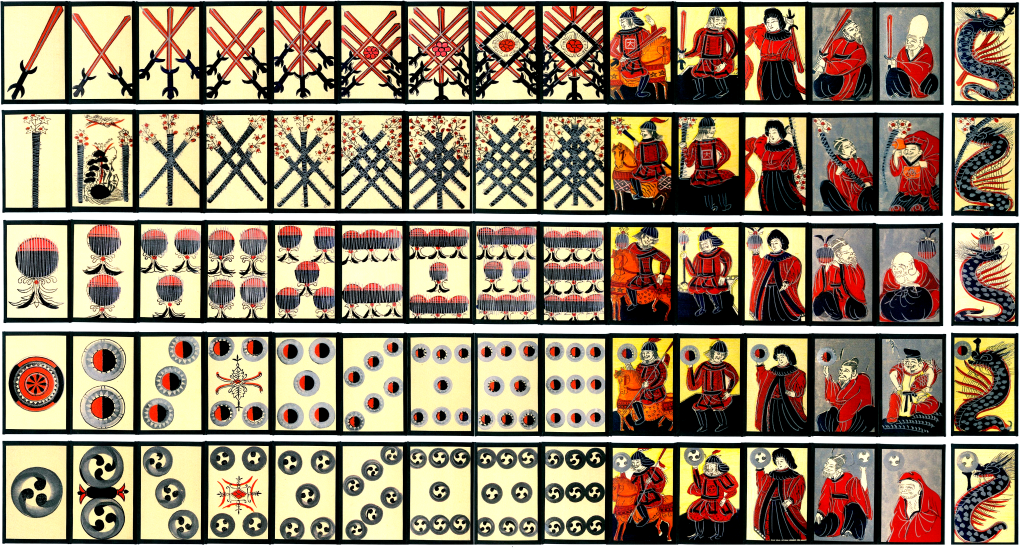Our trip to Total Con 2016
Stuff I learned about myself at Total Con 2016
- I love to teach kids how to play games. When they are into it, you can’t get a better experience than explaining how a game is played to a young mind. They pick stuff up so fast and in doing so enjoy the game so much quicker because they grasp it within a few minutes. James (a.k.a. The Gamebreaker) and we came to the agreement that younger players don’t have and preconceived notions about what a game is or wondering if the mechanic is the same as another game they’ve played; they just want to play and have fun.
- Not every game is for everyone. This is a no brainer, but it get’s driven home every once in a while, when a person sits down to play and you can tell their just not jazzed about your game, or they don’t see the “tactics” or “how the mechanic works” and let you know they’re not impressed. I’ve learned to deal with that, not take things personally, listen to what their saying (since if you hear the same complaint enough, it may be part of a larger design issue). Most of all I’ve learned to move on, think on all the other folks who played and loved it.
- I use “italics” way too much. It’s a pretty big deal when an industry legend plays your game, and likes it. Frank Mentor sat down with us on Sunday morning and played Master of Spies. I was nervous, who wouldn’t be, this guy has been in the gaming industry since the 80’s, worked with and was friends with Gary Gygax. He said the game had a “solid mechanic” and his only “complaints” were about card design. He gave us lots of feedback on the graphic layout and pointed out that I use italics WAY too much on cards, making things more difficult to read. So now I need to put a picture of Frank near my computer with a text balloon saying “Stop using Italic fonts!”
- When in “Costume”, bring everything you’ll need to the table,

Here I am all dress up at Bartholomew Vahn-Mott, merchant and Trader in the world of Eldinar. including water, snacks and a fan. I like to think I come to an event as prepared as possible, which paid off. Since we we in an interior suite at the hotel I brought a small desk fan so the room wouldn’t get stuffy. Well, Saturday was unusually warm and being in an undershirt, a “blousey” shirt, a frock coat, plus a sheep wool and leather mongol hat, I was a little sweaty. So I asked my lovely wife Naomi to run back to the room and grab our fan. It was a life saver and prevent the frock coat from needing to get dry cleaned.
- Your Goals can be reached. Three years ago we set a goal to have the game we were developing at the time (a.k.a. by its working title, Project Lightning Sword) ready to show our friends by Total Con 2015; which we did plus having an early version of Master of Spies to show as well. Our next goal was to be an exhibitor at Total Con 2016, have a Kickstarter ready to go and get Frank Mentzer to play test it. After a year’s worth of play-testing, networking and planning we managed to get all that stuff done. Our Kickstarter will launch in a couple days (Feb. 29th) and I believe we are as ready as we can be.
So there are the 5 things I learned about myself at Total Con 2016, now we begin to set our goals for Total Con 2017, which will probably have something to do with Project Lightning Sword getting a proper name and a Kickstarter next February.

